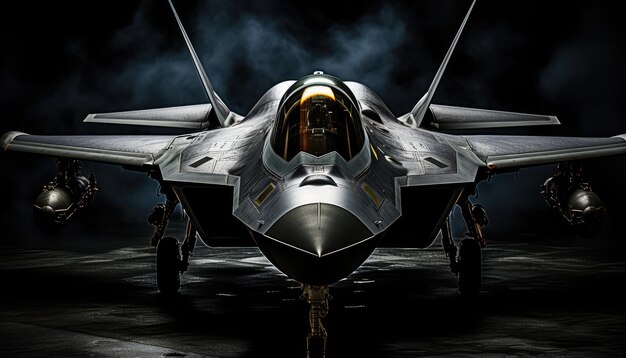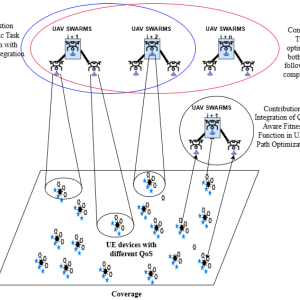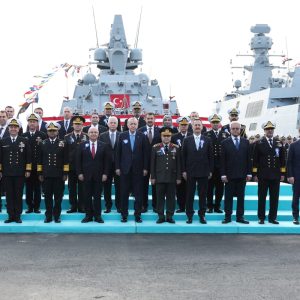Global Stealth Fighter Collaborations between the United Kingdom, Japan, and Italy mark a significant milestone in development. This groundbreaking alliance, known as the Global Combat Air Partnership (GCAP), has set its sights on new heights with a treaty aimed at advancing the realm of stealth fighter technology.

Strategic Collaboration Unveiled: A Closer Look at GCAP’s Stealth Fighter Treaty
The treaty announced through an official statement, underscores the commitment of the three nations to pool their expertise and resources in a concerted effort to elevate global standards in stealth fighter capabilities. This unprecedented collaboration brings together the rich heritage of the UK’s aerospace prowess, Japan’s technological ingenuity, and Italy’s renowned craftsmanship in defence technology.
Key Objectives of the Stealth Fighter Treaty
- Technological Synergy: One of the primary objectives of the GCAP treaty is to harness the collective technological strengths of the UK, Japan, and Italy. By synergizing their expertise, the nations aim to create a stealth fighter that surpasses existing benchmarks in terms of performance, stealth capabilities, and adaptability.
- Operational Integration: Beyond technological advancements, the treaty emphasizes the importance of seamless operational integration. This entails developing a stealth fighter that not only excels in individual capabilities but also seamlessly integrates into the military operations of each participating nation.
- Mutual Strategic Benefit: The collaborative effort is not solely focused on technological superiority; it also aims to provide mutual strategic benefits to the participating nations. This involves sharing knowledge, enhancing military interoperability, and fostering a strategic alliance that extends beyond the realms of the aerospace industry.
Unveiling the GCAP Stealth Fighter: A Game-Changer in Aerospace Technology
Cutting-Edge Technology Integration
The GCAP stealth fighter is poised to be a game-changer, thanks to the integration of cutting-edge technologies. Stealth capabilities, often a cornerstone of modern air superiority, are expected to reach unprecedented levels, rendering the aircraft virtually invisible to radar systems. This marks a significant leap forward in the ongoing quest for air dominance.
Advanced Avionics Systems
The success of any stealth fighter hinges on its avionics systems. GCAP’s collaborative efforts include the development of advanced avionics that not only enhance pilot situational awareness but also enable stealth fighters to operate in diverse and challenging environments. This includes state-of-the-art radar systems, communication modules, and navigation technologies.
Adaptive Design for Evolving Threats
Recognizing the dynamic nature of modern warfare, the GCAP stealth fighter incorporates an adaptive design. This ensures the aircraft can evolve to counter emerging threats, maintaining its relevance and effectiveness over time. The flexibility of the design allows for seamless integration of future upgrades, ensuring a sustained competitive edge.
Global Implications and Strategic Significance
Strengthening Diplomatic Ties through Defense Collaborations
Beyond the technological advancements, the GCAP stealth fighter project carries significant diplomatic weight. Collaborative ventures in defence technology serve as conduits for strengthening diplomatic ties between nations. The UK, Japan, and Italy, through this initiative, foster a sense of unity and mutual trust that extends beyond the immediate goals of the stealth fighter project.
Positioning as Global Leaders in Aerospace Innovation
The collaborative effort positions the UK, Japan, and Italy as frontrunners in aerospace innovation. This not only enhances their global standing but also opens avenues for future collaborations with other nations seeking to leverage their collective expertise. The ripple effect of this alliance extends beyond the boundaries of the GCAP project, shaping the future of international aerospace endeavours.
Conclusion: Paving the Way for Future Aerospace Excellence
In conclusion, the GCAP stealth fighter treaty represents a paradigm shift in global aerospace collaboration. The implications are far-reaching as the UK, Japan, and Italy join forces to propel stealth fighter technology to new heights. From technological advancements and operational integration to diplomatic ties and global leadership, the collaborative effort leaves an indelible mark on the trajectory of aerospace excellence.
As the GCAP stealth fighter project unfolds, the world watches with anticipation, recognizing that this alliance is not just about creating a superior aircraft but also about forging bonds that transcend borders, ensuring a future where innovation knows no limits.
Source










